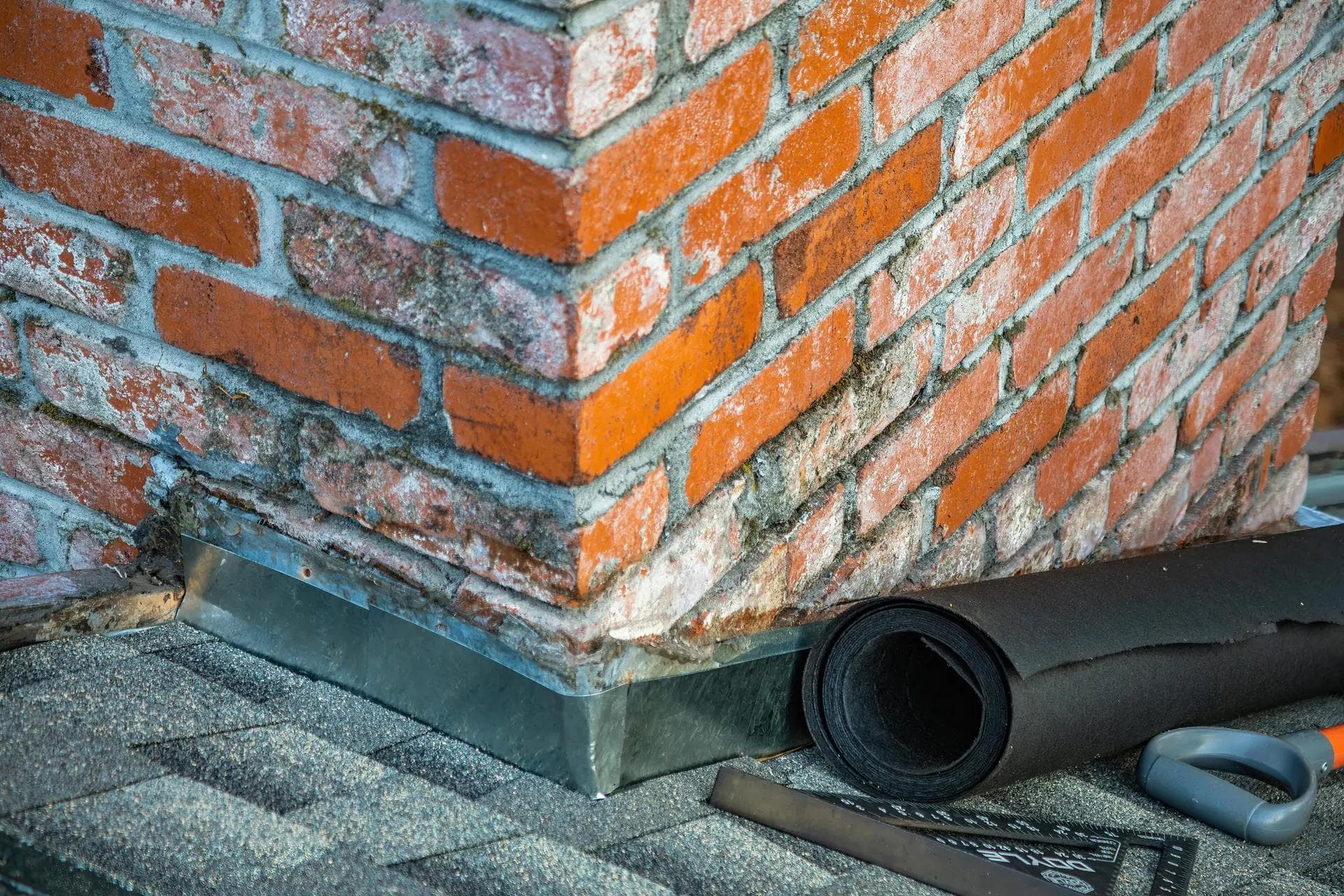
Why is Roof Flashing Essential for Leak Prevention?
Roof flashing, an often-overlooked component, plays a vital role in protecting your home from water damage. By directing water away from vulnerable areas, flashing prevents costly repairs and preserves your roof’s integrity. In this guide, we’ll explain what roof flashing is, why it’s essential for leak prevention, and how homeowners can ensure it’s doing its job.
What Is Roof Flashing?
Roof flashing consists of thin metal strips, typically made of aluminum, copper, or galvanized steel, installed at roof joints, edges, or transitions. These strips act like a shield, guiding water away from areas where it could seep into your home.
Types of Roof Flashing
- Step Flashing: Used where sloped roofs meet walls, such as around chimneys, to prevent water from seeping into the joint.
- Valley Flashing: Channels water through the valleys where two roof planes meet, preventing pooling.
- Drip Edge: Installed along roof edges to direct water away from the fascia and into gutters.
- Counter Flashing: Protects the base of chimneys or vents, working with step flashing for a watertight seal.
Flashing’s primary role is to seal gaps where water could penetrate, ensuring your roof remains watertight and secure.
Why Roof Flashing Matters for Leak Prevention
Roof flashing is a critical defense against water damage, especially in areas prone to leaks. Here’s why it’s so important for homeowners:
Protects Vulnerable Areas
Flashing prevents water from entering at high-risk spots like chimneys, vents, skylights, or roof valleys. It redirects water, especially during heavy rain or wind-driven storms, reducing the chance of leaks.
Extends Roof Lifespan
By keeping water away from underlayment, decking, and other structural components, flashing minimizes damage that could weaken your roof over time.
Prevents Interior Damage
Properly installed flashing stops water from reaching your home’s walls, ceilings, or insulation, preventing mold, rot, and costly interior repairs.
Enhances Structural Integrity
Flashing protects siding, fascia, and other exterior elements from erosion or water-related damage, maintaining your home’s overall structure.
Common Issues with Roof Flashing
Flashing can fail over time, leading to serious problems if not addressed. Knowing the signs and causes of issues can help you act quickly.
Signs of Problems
- Rust or Corrosion: Visible on metal flashing, especially older or untreated materials.
- Loose or Damaged Flashing: Strips that are bent, cracked, or detached allow water to seep through.
- Water Stains: Discoloration near chimneys, vents, or valleys, or leaking ceilings during rain.
Causes
- Aging Materials: Flashing can wear out due to weather exposure, especially in harsh climates.
- Poor Installation: Improperly sealed or misaligned flashing fails to keep water out.
- Storm Damage: High winds, hail, or debris can dislodge or damage flashing.
Impact
Faulty flashing can lead to leaks, structural damage to your roof, or even interior issues like mold growth. Left unchecked, these problems can result in expensive repairs.
How to Maintain Roof Flashing
Regular maintenance can extend the life of your roof flashing and prevent leaks. Here are some tips for homeowners:
- Inspect Visually: Check for rust, loose flashing, or debris buildup around chimneys, vents, or valleys. Use binoculars for safety if inspecting from the ground.
- Clear Debris: Remove leaves, branches, or dirt that could trap moisture against flashing.
- Seal Small Gaps: For minor gaps, apply roofing sealant with proper safety gear, but avoid climbing on the roof unless experienced.
- Schedule Professional Inspections: A roofing contractor can thoroughly assess flashing and identify issues you might miss.
When to Call a Professional
Some flashing issues require expert attention to ensure proper repairs and long-term protection. Contact a roofing contractor in these scenarios:
- Rusty, cracked, or improperly installed flashing.
- Persistent leaks near vents, chimneys, or valleys.
- Planning a roof replacement, which often includes new flashing installation.
Benefits of Professional Roofing Services
- Expert Installation: Ensures flashing is watertight and properly sealed.
- Comprehensive Inspections: Identifies hidden issues and provides warranties for peace of mind.
- Safe Repairs: Professionals have the tools and experience to work safely on your roof.
Schedule a free consultation with Richter Roofing to assess your flashing and keep your home protected.
Conclusion
Roof flashing may be small, but it’s a mighty protector against leaks, safeguarding your home’s roof, interior, and structural components. By sealing vulnerable areas like chimneys, vents, and valleys, flashing extends your roof’s lifespan and prevents costly damage. Regular maintenance and professional inspections ensure your flashing remains effective. Contact a roofing contractor today for a free inspection to confirm your roof flashing is ready to keep your home dry and secure.
FAQ
What is roof flashing?
Roof flashing is metal strips installed at roof joints, like chimneys or vents, to direct water away and prevent leaks.
Why is roof flashing important for leak prevention?
It seals vulnerable areas, stopping water from entering and damaging your roof, walls, or interior.
How do I know if my roof flashing is failing?
Look for rust, loose or damaged flashing, or water stains near vents, chimneys, or valleys during rain.
Can I maintain roof flashing myself?
You can clear debris or seal small gaps with safety gear, but major repairs should be handled by a roofing contractor.
When should I hire a professional for flashing issues?
Call a roofing contractor for damaged flashing, persistent leaks, or new roof installations to ensure proper protection.
Customer Reviews
With over 1000 home projects completed to date, we know how to treat our customers. This is what they’re saying about us.

